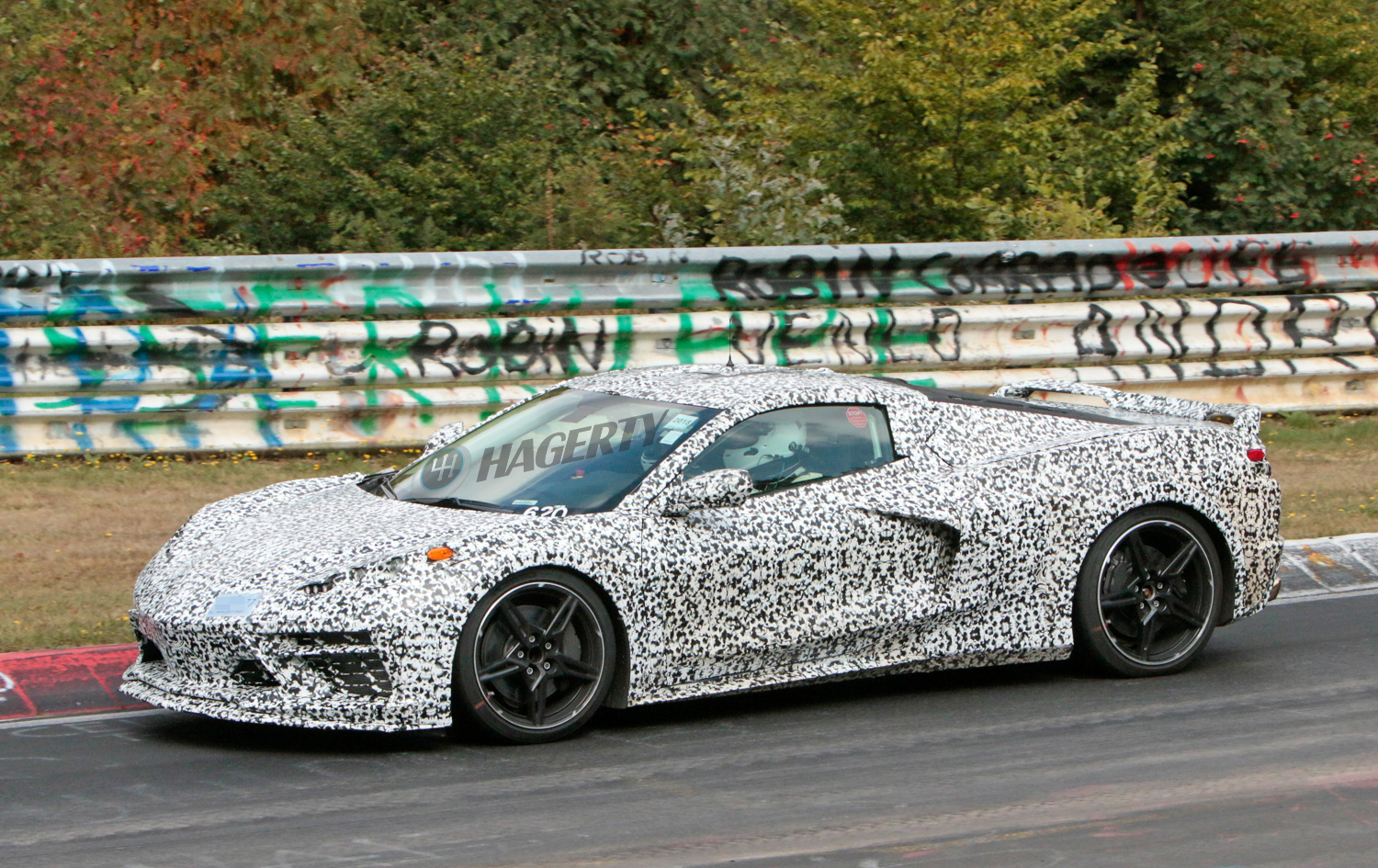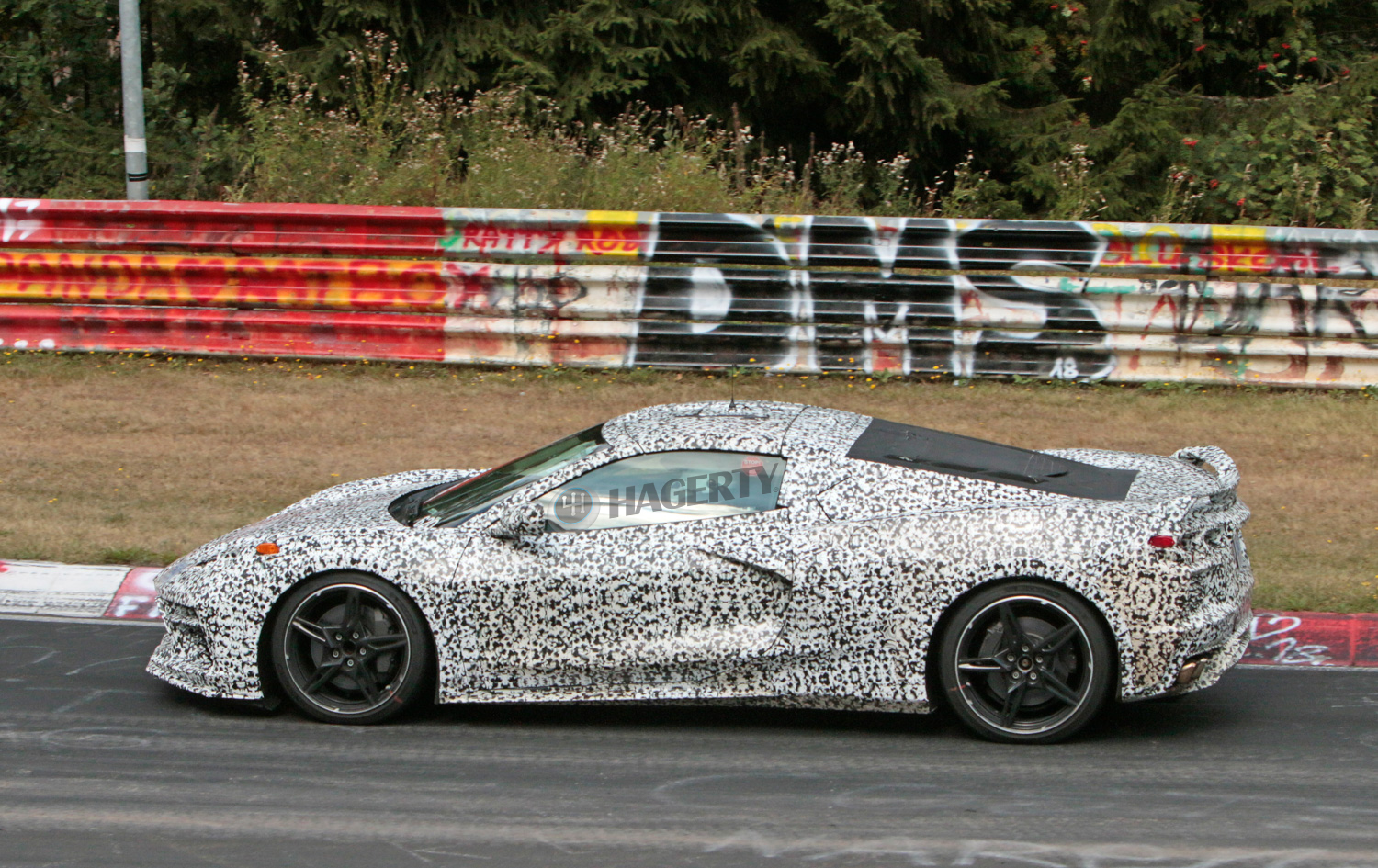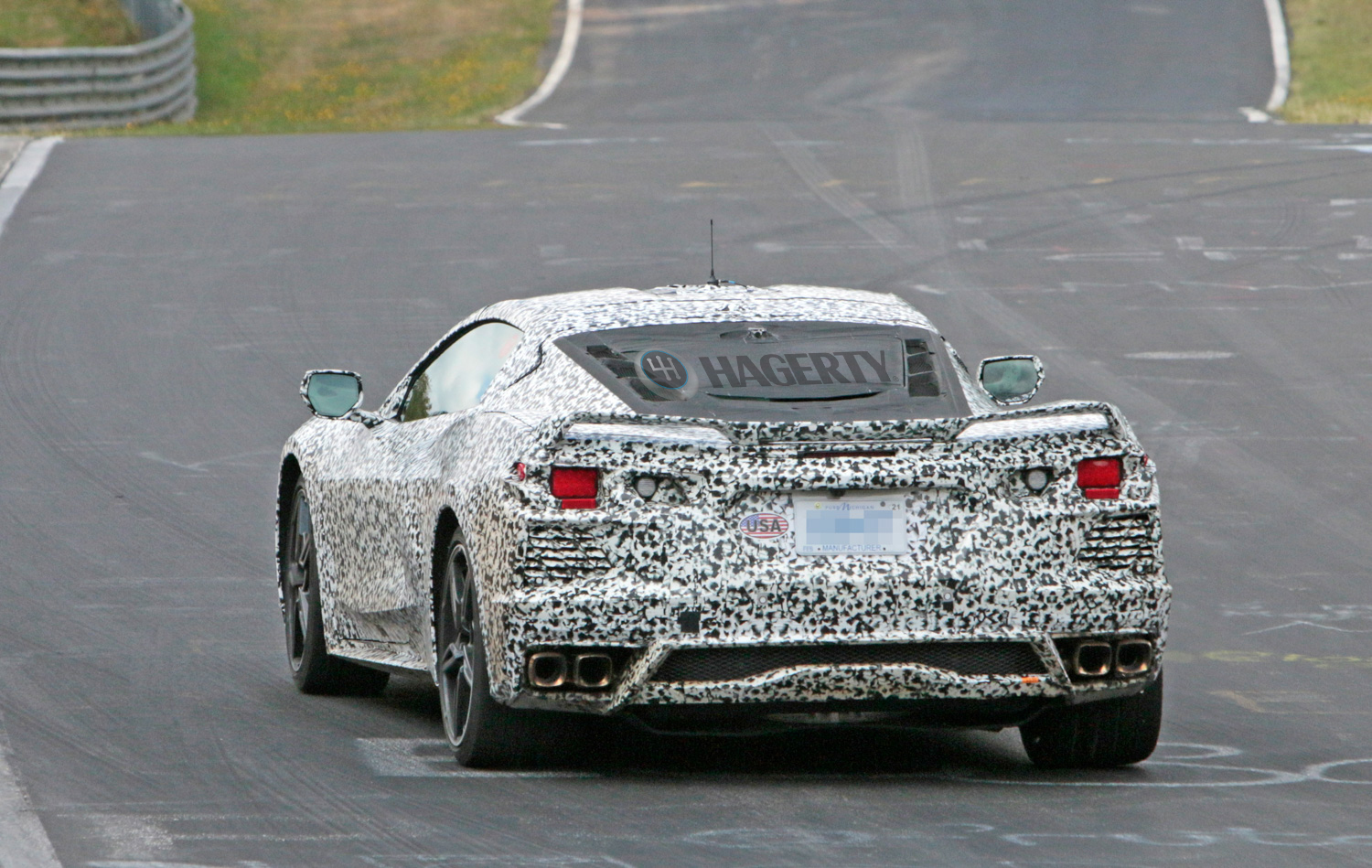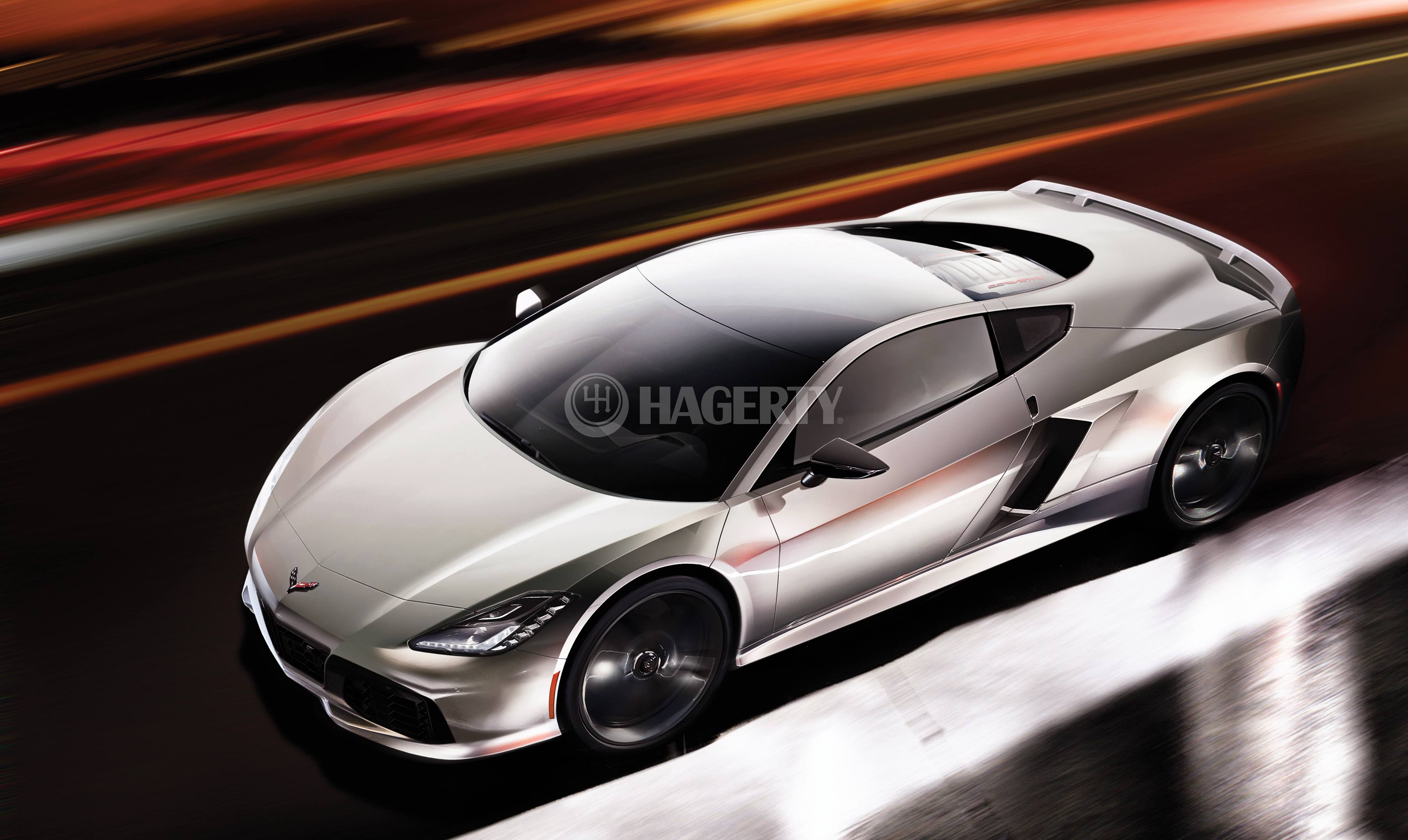Media | Articles
Why the mid-engine Corvette took four decades
Recently we sat down with three former Chevrolet Corvette engineers—Dave McLellan, Dave Hill, and Tom Wallace—and got their take on the upcoming C8. Among the questions we asked: Why didn’t Arkus-Duntov’s pet project—the mid-engine Corvette—achieve lift-off on his watch? The idea has been kicked around inside GM for decade. What took so long?

Their responses are below.
Dave McLellan
Dave McLellan, 82, faced the daunting task of replacing Arkus-Duntov as chief engineer of the Corvette back in 1975.
Q: According to legend, Zora’s last words as he left the building were, “Dave, you must build the mid-engine Corvette!” True?
Marketplace
Buy and sell classics with confidence
DM: Those were essentially Zora’s parting words. While there was ample interest in doing a mid-engine sports car within Corvette engineering and GM’s design department, neither the Chevrolet Division nor corporate management was onboard with the idea. That’s why Zora’s dream was delayed indefinitely.
Q: Were Corvette customers in your day interested in a move to mid-engine?
DM: High level interest from the press definitely helped stimulate the marketplace. But what has surprised me over the years, when experimental mid-engine cars have been displayed at gatherings such as Mid America’s Corvette Funfest, was Corvette owners’ lack of interest in moving from the traditional layout.

When you consider that the move beyond chrome bumpers was initially a tough sell, it’s clear how conservative Corvette owners can be. The sense I have is that advanced features such as a mid-engine layout and all-wheel drive will eventually attract new buyers. That said, I don’t claim sufficient marketing expertise to attach numbers to this belief.
Q: Would you agree that the technology behind the move to mid-engine has been well understood for decades?
DM: While writing my book, Corvette from the Inside (published in 2002 by Robert Bentley, Inc.), I talked to many of the engineers who worked under Zora when he explored mid-engine experimental models such as the open-wheel CERV I, the all-wheel-drive CERV II, and the late-1960s show cars. Zora was primarily interested in improving Corvette’s performance. He didn’t involve upper management too deeply because he knew they would have been scared off by what he was planning. Chevrolet sales and marketing personnel also lacked interest in a mid-engine Corvette.
Q: So what’s different today?
DM: The major investments in the Bowling Green manufacturing facilities, including a new world-class paint shop and a reconfigured assembly line, prove that there is now solid financial support for new Corvettes. Clearly, the corporation and Chevrolet are up to something very special for this car that wasn’t previously in the cards.
I’m not sure if they’re moving or merely broadening the market for Corvettes. Clearly, C8 is a once-in-a-lifetime opportunity.

Q: What sort of C7-to-C8 transition do you expect?
DM: I feel that continuing C7 after C8’s introduction makes the most sense. Examining spy photos, it’s clear that C8 was designed first and then morphed to apply key exterior details to today’s C7. This is an excellent means of providing visual continuity across the lineup.
Q: Do you see C8 as an expensive, low-volume alternative to C7?
DM: Knowing that the market for mid-engine cars is relatively well populated, I would suggest that the Corvette enter near the top of the heap. Chevrolet needs to show potential buyers what it’s capable of delivering with a potent V-8, a hybrid-electric powertrain, and all-wheel drive. In other words, GM’s version of a Porsche 918 Spyder.
Dave Hill
McLellan had no more luck promoting a mid-engine Corvette than Arkus-Duntov did. But he did advance the cause with major structural, powertrain, materials, and electronic systems improvements. In 1992, he passed the baton to Dave Hill, now 75, who presided as Corvette’s chief engineer until his 2006 retirement.

Q: How would you assess the enthusiasm for a mid-engine design when you arrived as Corvette’s third chief engineer?
DH: Since I had an amateur racing background, I was very interested in both Corvettes and mid-engined cars. Following some early training by Chevrolet folks and Dave McLellan, I was surprised the mid-engine discussion was still alive and well long after Zora Arkus-Duntov left the company. While I never really discussed that subject with McLellan, I heard that he got himself in trouble with Chevy by advocating the move to mid-engine. Also, the simulation models we had back then predicted that the chassis would not be optimized with a rear weight bias and that a more equitably balanced car would be quicker on the track.
I thought moving the transmission rearward for C5, which occurred well before my arrival, was a great idea on many counts. Positioning the wheels further out to the corners of the car yielded more modern proportions, major gains in passenger space, a vastly superior structure—especially for convertibles—and better exhaust system routing.
Q: What were customers seeking at that time?
DH: They wanted a well-built car free of squeaks and rattles. Our studies revealed that Corvette owners prized attractive convertibles that were great to be seen in. It’s important to feed their egos. We also learned that enthusiasm for manual transmissions was fading. To avoid ruining the business case, we had to use an existing automatic that fit our package and was capable of delivering the desired performance.
The Northstar V-8 developed by Cadillac initially seemed attractive for a mid-engine car, but its transverse orientation was bulky and much too tall to fit well in Corvette convertibles.

Q: Please share how Tadge Juechter joined your team.
DH: When I arrived, it was clear that I needed a capable assistant chief engineer. Tadge interviewed for the position and was obviously the best guy for the job. He turned out to be a wonderful engineer, team leader, and GM executive. But he insisted he wouldn’t join our group if we weren’t willing to improve what he considered the Corvette’s weaknesses.
Q: Did Tadge join the Corvette group as a mid-engine advocate?
DH: No. The financial climate was then so bad that GM’s CEO (Robert Stempel) and President (Lloyd Reuss) both lost their jobs while I was chief engineer. We felt we’d be lucky to get the money for a new Corvette but not a new powertrain layout. Since C5 was state of the art, we felt no reason to mess with that success. We concluded the new C6 should be an evolution improving on lessons learned, not a revolution. Our major accomplishments were the Z06’s aluminum space frame, a 7.0-liter small-block V-8 that revved to 7000 rpm, and the new six-speed paddle-shifted automatic. Overall, I’m proud of what we achieved.
Q: So you’re not a mid-engine believer?
DH: If there will be only one Corvette, I feel the layout of the fifth, sixth, and seventh-generation cars is best. Versatility is what made Corvette a segment leader. As I understand it, Tadge Juechter has been given the money to introduce a mid-engine C8 while continuing C7 production in a plant expanded by major investments. That said, I believe customers will continue buying C7s because of its excellent combination of value and versatility. The beauty of today’s Corvette is that you can take it on a two-week vacation without arguing with your spouse about how much stuff she can take.

Q: What about the loss of the clutch pedal expected in C8?
DH: Traditional customers will certainly resent that change because the manual-shift cars are fun to drive. But I believe that machines often outdo humans, a case in point being fast-acting transmissions. That area of powertrain design has improved so much that I’m sure C8 will have an automatic capable of out-shifting humans operating a manual transmission.
Q: Do you think Corvette customers will be willing to spend a lot more for a mid-engine design?
DH: I’ll be surprised if Tadge delivers a C8 for $70,000. The sweet spot lies somewhere between $70,000 and $100,000. I believe that tremendous value for the dollar exists throughout that range.
Tom Wallace
Tom Wallace, 70, took over the Corvette chief engineer’s job from Hill in 2005 shortly after C6 was born. The cliché “Close, but no cigar” best describes the mid-engine model’s fate under his watch.
Q: Please share how the idea of developing a mid-engine Corvette bubbled up during your administration.
TW: In 2006 or 2007, while we were working on the C6 Z06 and ZR1, the inevitable “What’s next?” query came up in discussions between engineering and marketing teams. The conclusion was that we definitely needed to investigate the mid-engine layout to further advance performance, so studies were initiated towards that end.

Q: Can you name the key players backing that investigation?
TW: My amateur racing experience taught me how hard it was to beat rear-engined Porsches on the track, so I was an early adopter. And Tadge Juechter’s point of view was that since we’ve tried everything else, we really needed to pursue a mid-engine design. Knowing that the Corvette customer base was aging, marketing was definitely on board with any idea that might attract younger buyers.
GM’s vice chairman Bob Lutz’s point of view was to definitely not rule out the mid-engine alternative for the C7 Corvette. The only tough sell was the company’s CEO, Rick Wagoner, who was skeptical of our business case. He doubted the likelihood of earning a profit selling mid-engine Corvettes retailing for $50,000 after variable costs and tooling expenses were amortized. Raising the base price to $55,000 finally earned his approval. That said, he clearly stipulated that we would be held fully accountable for a profitable return on investment in the new mid-engine Corvette.
Q: What was the scope of your development work?
TW: We took secret test trips studying the Ferrari F430 and various Porsches. GM design studios around the world provided 1/8th scale models to study proportions. Then full-size clays were created to compare a front-engine and a mid-engine design side-by-side. Both were gorgeous.
We never reached the point of constructing a running mid-engine prototype.

Q: What interrupted your progress?
TW: Unfortunately, the cash started drying up in early 2008. GM’s less profitable car programs were simply cancelled. By the middle of ’08, only two money makers remained: full-size trucks and Corvettes.
By the end of that year, my friend Gary White, then vehicle line executive for full-size trucks, told me he was beginning to pull out some of the models planned for the next generation of his products.
In October 2008, we compiled information related to future-Corvette finances and timing for Bob Lutz to present at a board of directors meeting. Immediately following that session, he called me saying, “I’m sorry to report the patient is dead. No capitalization is available for a new Corvette. And I don’t know the foreseeable future.”
To conserve cash, GM offered early retirement packages to trim head count. When I told Lutz I wasn’t ready to leave because we’d started developing a new Corvette, his response was disturbing: “We’re not doing C7, at least for a while. You’re gonna have to keep the current car alive with new paint and decals.”
I told Lutz that wouldn’t be fair to the car or the customers. So even though I was only 62 at the time, I volunteered for early retirement. I loved Corvettes and working with our team but couldn’t see myself babysitting a car with dice decals, new color options, and stuff like that. I retired November 1, 2008.

***
Seven months after Wallace stepped down, GM filed for Chapter 11 reorganization. Tadge Juechter, rewarded with the Corvette chief engineer’s title in 2006, assumed the babysitting job upon Wallace’s departure. Then something unexpected happened: Washington-appointed accountants inspecting GM’s books discovered that the Corvette was one of the corporation’s rare profit centers. Juechter was instructed to move development off the back burner to keep this sports car viable for the established customer base. Realizing that this was less than the ideal moment to launch a mid-engine design, Juechter’s team created the well-received C7 Corvette, unveiled in early 2013. ZO6, Grand Sport, and ZR1 editions quickly followed.
Like cobras—coiled and ready to strike—Juechter’s team continued its development work on the 2020 C8 Corvette. Recently, prototypes lapping the Nürburgring were captured on film shorn of their layers of camouflage. Word on the street is that the new mid-engine model will bow before the clock strikes 2019, possibly at November’s Los Angeles Auto Show.
Somewhere, Zora Arkus-Duntov is applauding.










